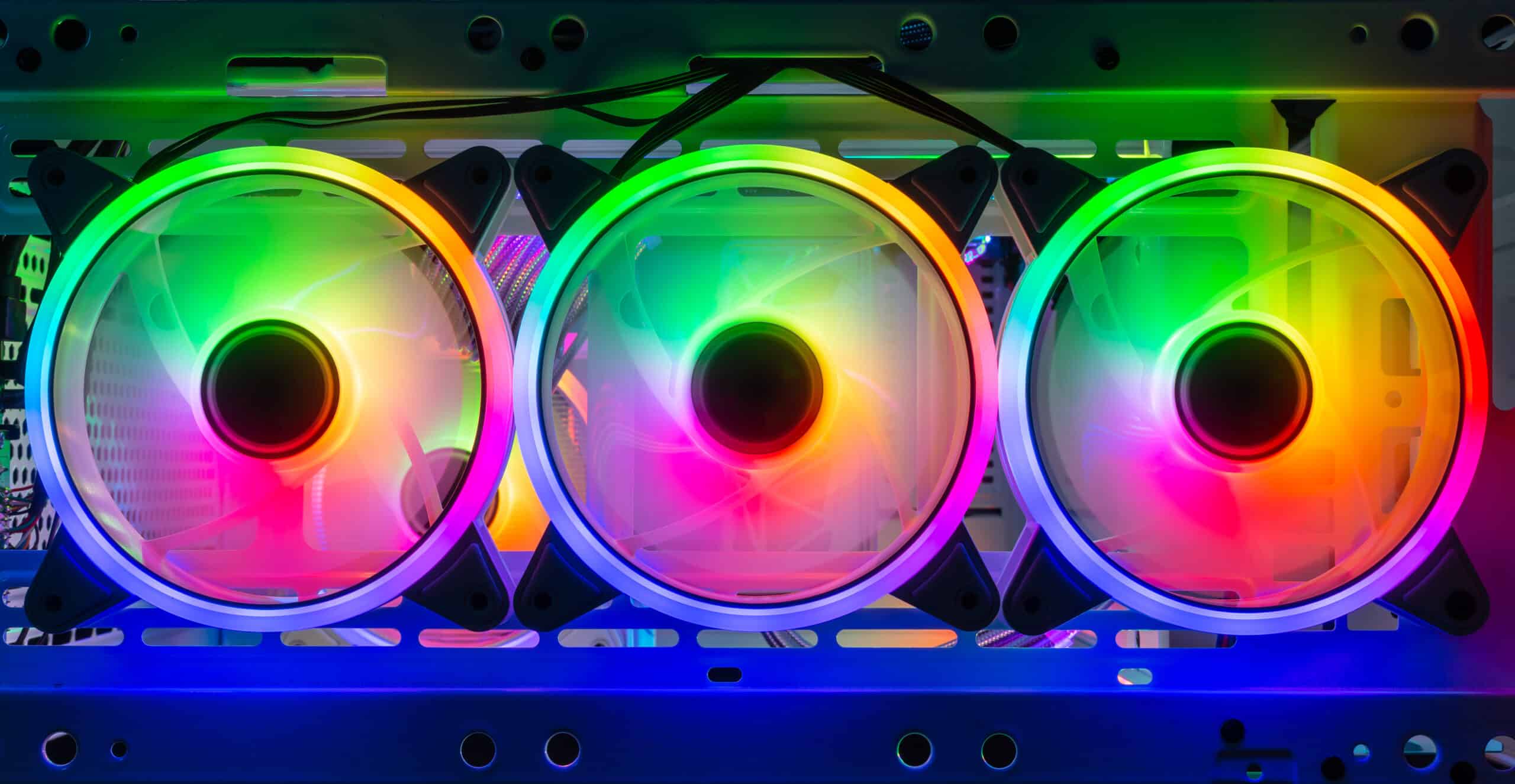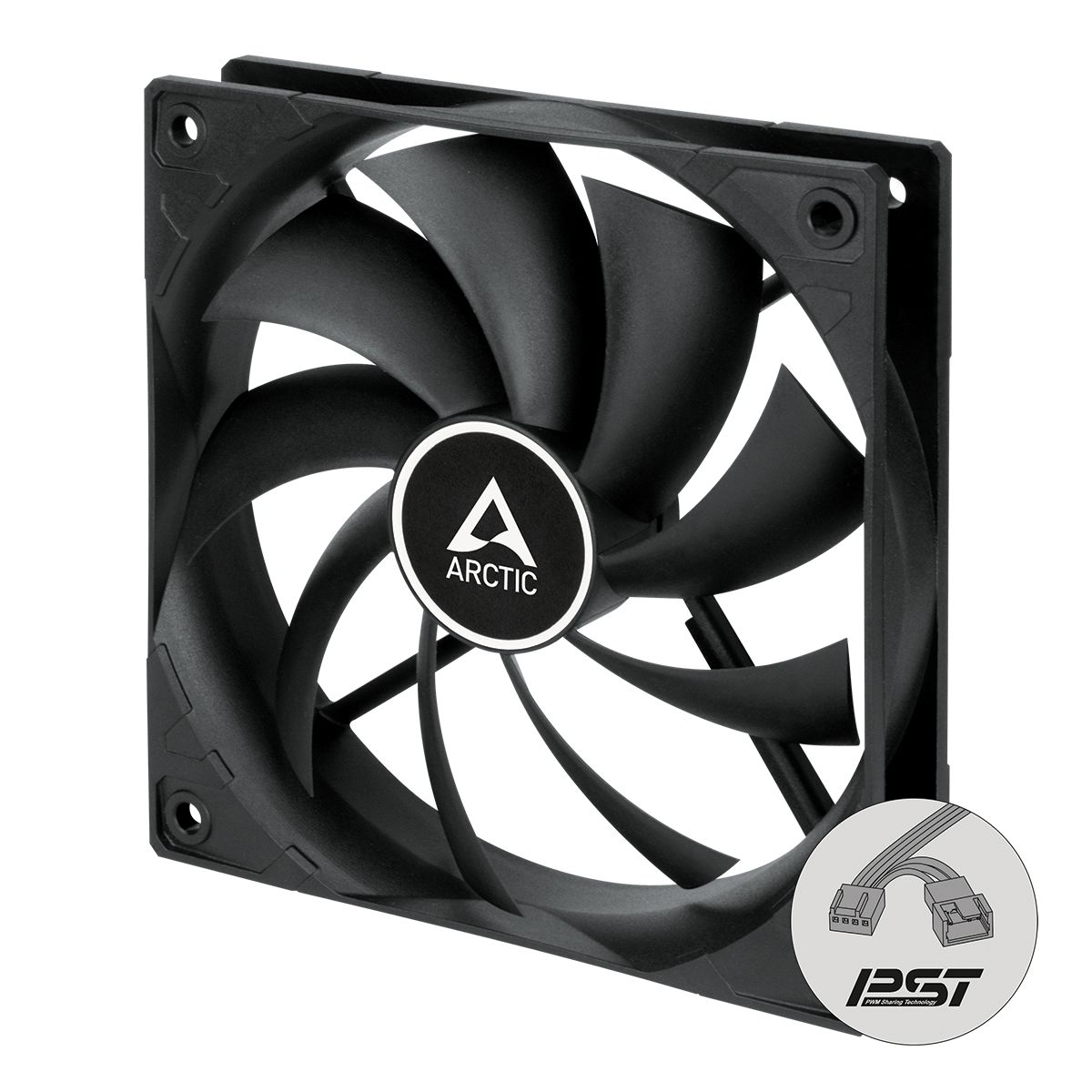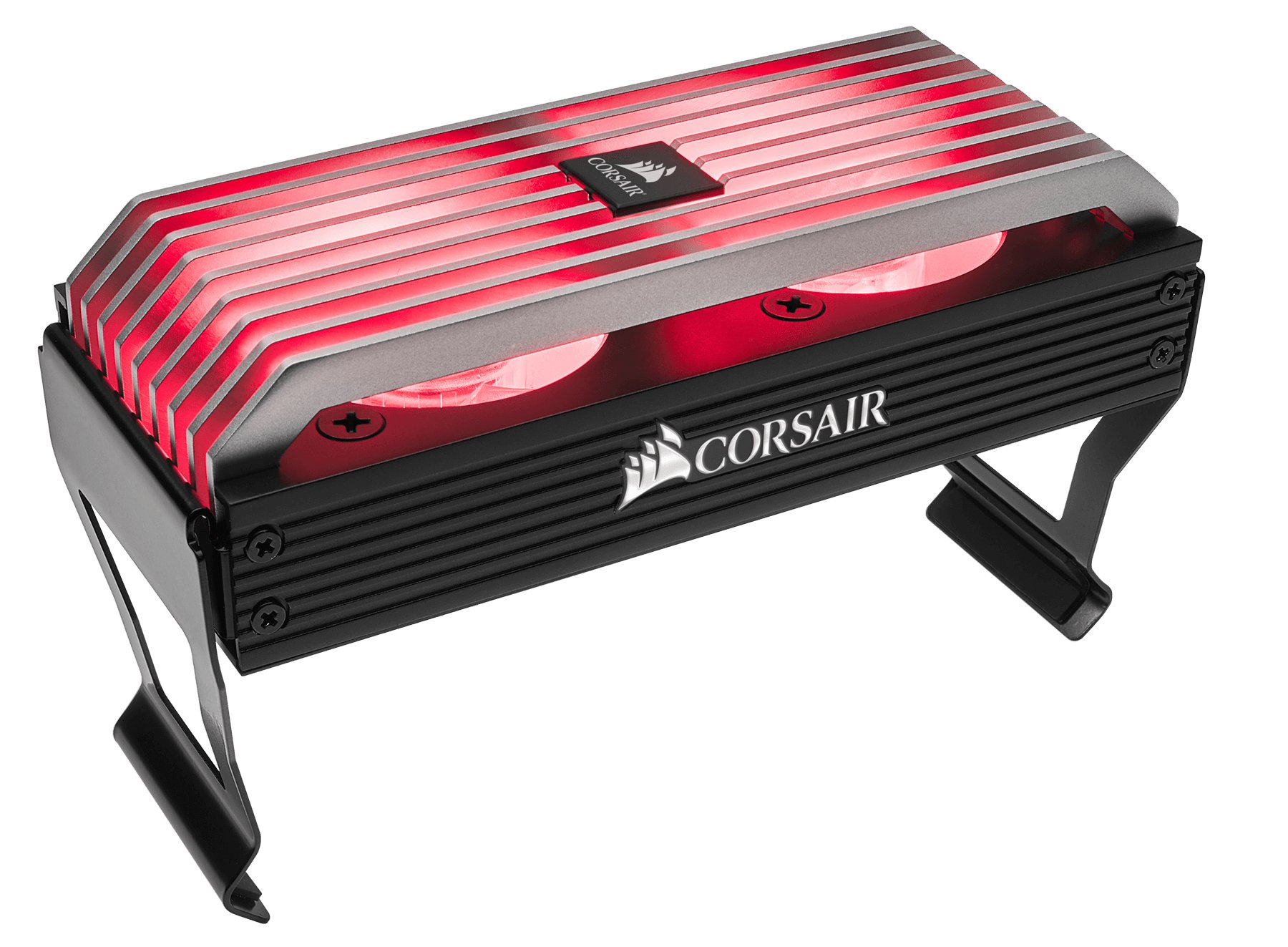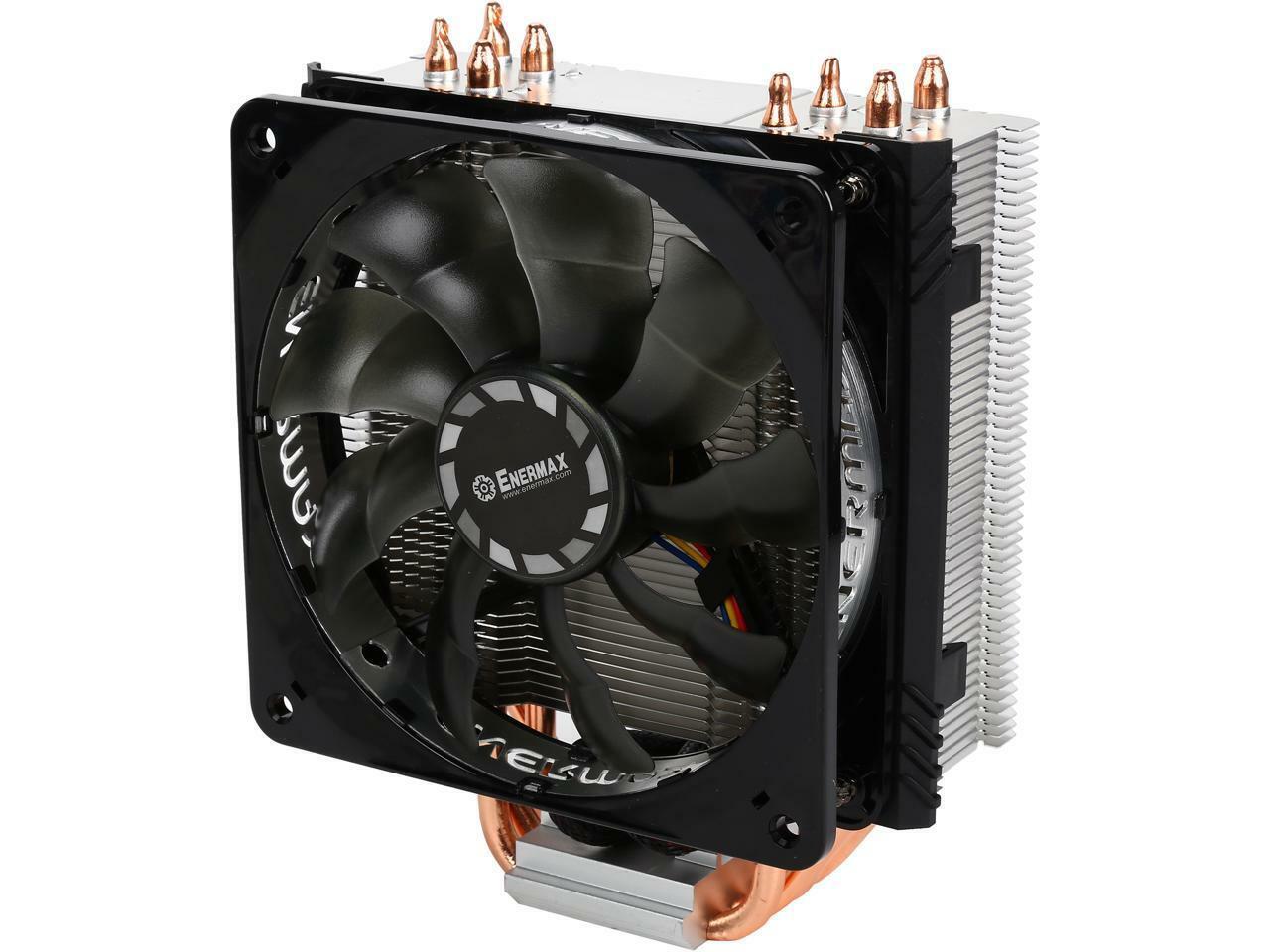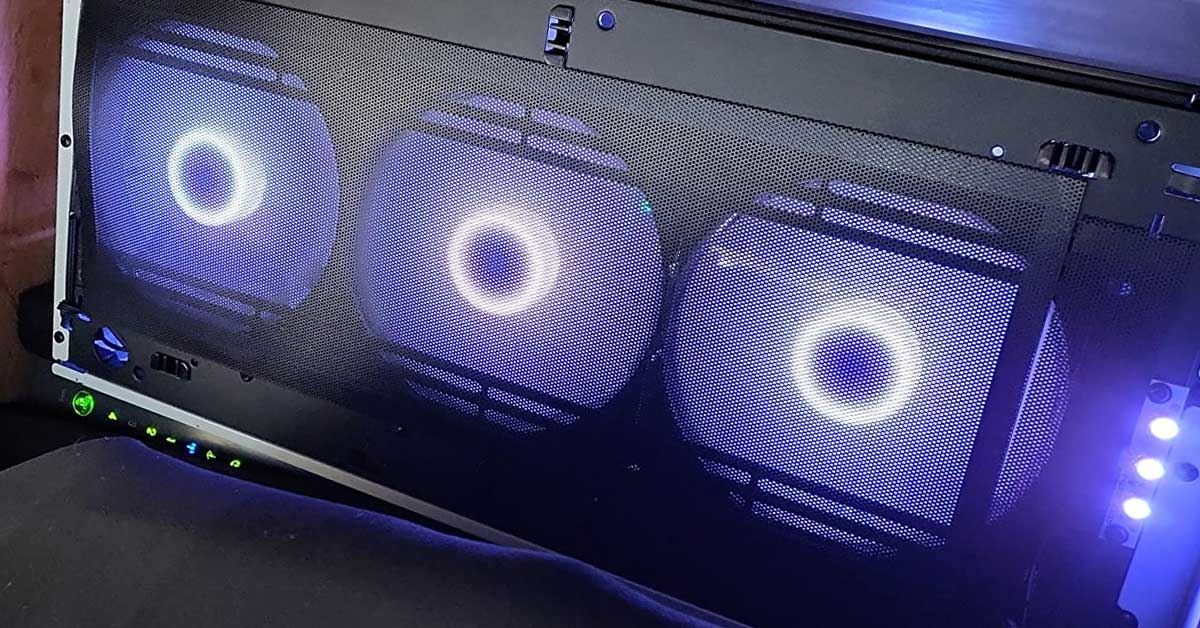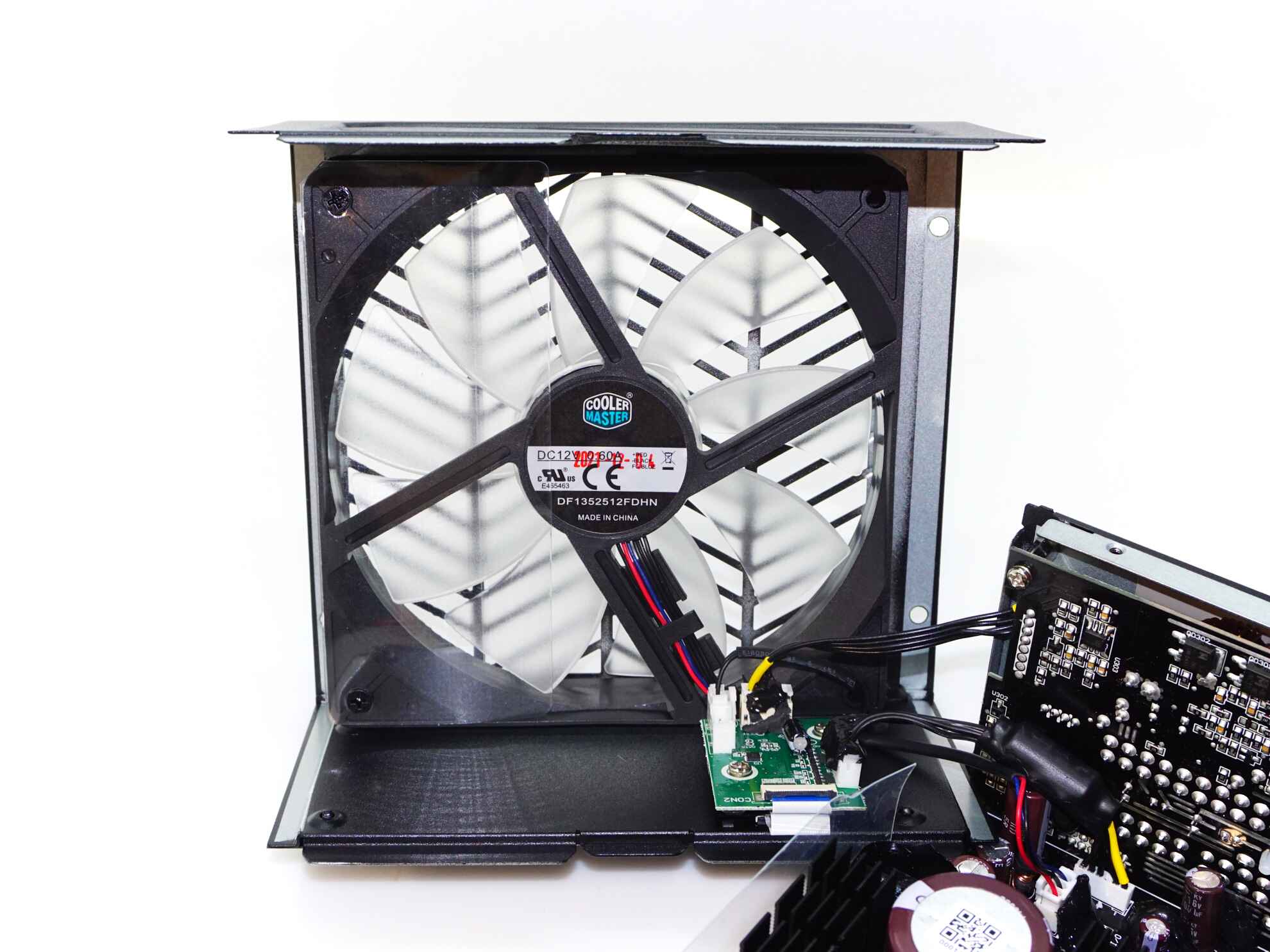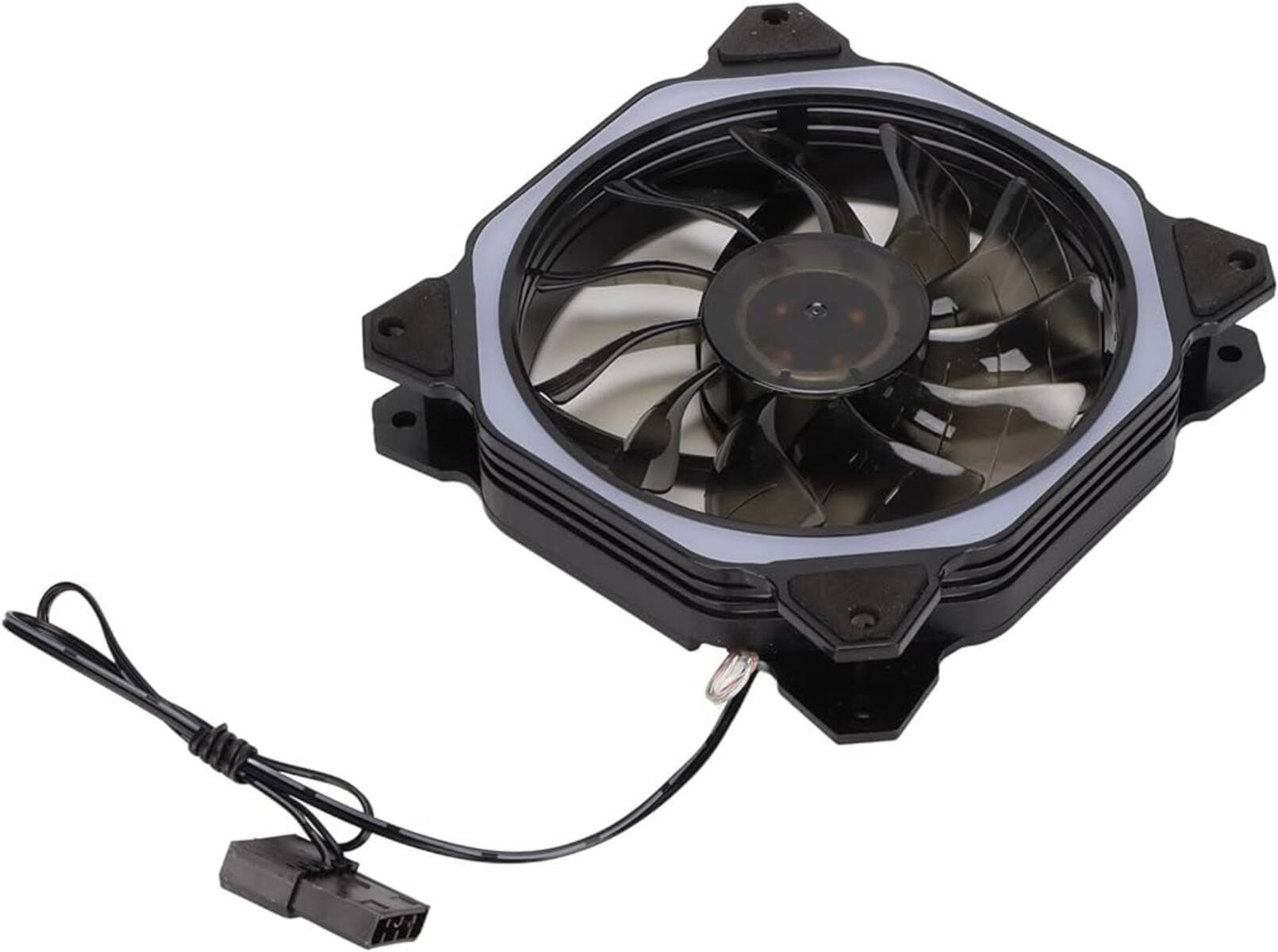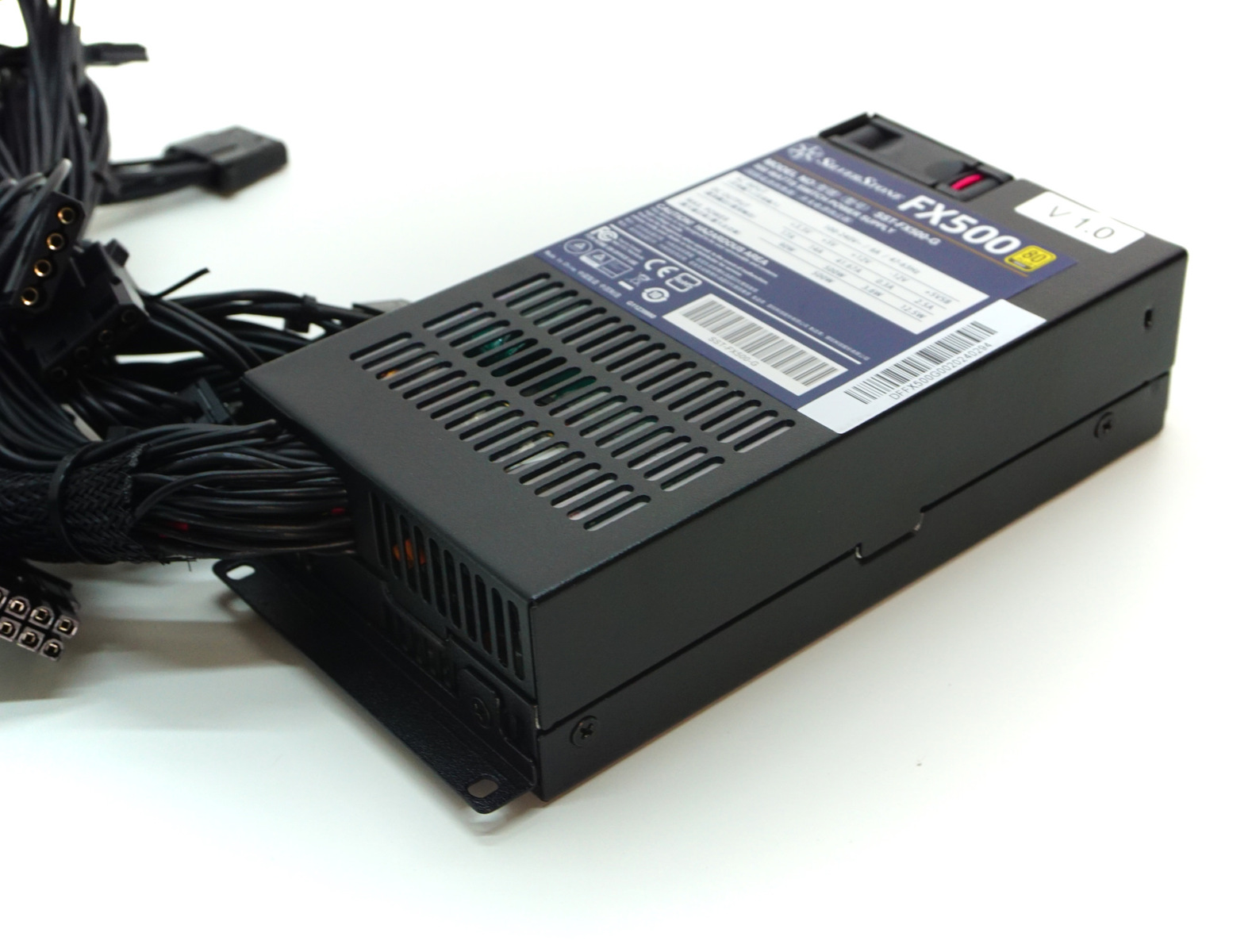Introduction
When it comes to keeping your computer cool, case fans play a crucial role in maintaining optimal temperatures. A case fan is a vital component that helps circulate air in your computer case, dissipating heat generated by various internal components. But with a wide range of case fan sizes available in the market, it can be challenging to determine which one will fit your computer case.
Finding the right case fan size is essential to ensure proper airflow and prevent overheating issues. You need to consider several factors before choosing the appropriate fan size, including the dimensions and specifications of your computer case, the specific cooling requirements of your hardware components, and the available fan mounting options.
In this article, we will discuss the factors to consider before choosing a case fan size, how to determine the maximum case fan size your computer case can fit, the common case fan sizes available, and additional considerations to keep in mind. We will also explore the benefits of upgrading case fans to a larger size and potential issues that may arise from using a larger case fan. By the end of this article, you will have a clearer understanding of case fan sizes and be able to make an informed decision when selecting the right one for your computer case.
Factors to Consider Before Choosing a Case Fan Size
Before diving into the different case fan sizes, it’s important to consider a few factors that will help you determine the right fan size for your computer case. Taking these factors into account will ensure optimal cooling performance and compatibility with your hardware components.
1. Computer Case Dimensions: The first thing to assess is the dimensions of your computer case. Measure the available space inside your case to determine the maximum fan size it can accommodate. Common case fan sizes include 120mm, 140mm, and 200mm. Ensure your chosen fan size fits within the allotted dimensions.
2. Cooling Requirements: Consider the cooling requirements of your hardware components. High-performance CPUs and graphics cards generate more heat, requiring more effective cooling. If you have power-hungry components, opting for larger case fans with higher airflow can help maintain lower temperatures and enhance system stability.
3. Mounting Options: Look at the mounting options available in your computer case. Some cases have specific fan mounts, while others may have multiple mounting locations. Check if your case supports the desired fan size and the number of available mounting spots. This will determine whether you can install multiple fans or need to stick to a single fan configuration.
4. Noise Level: Consider the noise level associated with different fan sizes. Generally, larger fans tend to be quieter as they can move the same amount of air at lower rotation speeds, resulting in reduced noise. If noise is a concern for you, opting for larger and slower-spinning fans might be a suitable choice.
5. Aesthetics: Although not directly related to performance, aesthetics play a role in choosing the right fan size. Some computer cases have built-in LED lighting or fan grills that can enhance the visual appeal of your system. Consider the overall look and feel you desire and ensure the fan size you choose fits with the aesthetics of your computer case.
By considering these factors, you can narrow down the suitable case fan size that will meet your cooling requirements, fit within your computer case, and complement your system’s aesthetics. Analyzing these aspects will guide you towards making a well-informed decision when choosing the appropriate case fan size for your computer.
How to Determine the Maximum Case Fan Size Your Computer Case Can Fit
Determining the maximum case fan size that your computer case can accommodate is crucial for ensuring proper installation and compatibility. Thankfully, it’s relatively straightforward to figure out the fan size limitations of your case. Here are some steps to help you with the process:
1. Check the Manufacturer’s Specifications: The first step is to consult the official documentation or website of your computer case manufacturer. Look for information on the maximum fan size supported by your case. The manufacturer should provide detailed specifications that include compatible fan sizes and mounting locations.
2. Measure the Dimensions: If you don’t have access to the manufacturer’s specifications or need to verify them, you can measure the available space inside your case manually. Start by determining the dimensions of the available fan mounting spots. Measure both the width and height of the mounting area to identify the maximum fan size you can install. Keep in mind that some cases may have different clearance requirements, so ensure there is enough space to accommodate your chosen fan size.
3. Consider Internal Obstructions: While measuring the dimensions, take note of any internal obstructions that may limit the fan size you can install. These obstructions can include CPU coolers, RAM modules, or other components that may restrict the available space for a larger fan. Make sure to account for these obstructions when selecting the fan size to avoid any compatibility issues.
4. Review User Forums and Reviews: If you are still unsure about the maximum fan size your case can handle, check online user forums and reviews specific to your case model. Often, experienced users share their experiences and provide insights into the largest fan sizes they have successfully installed. This information can be valuable in determining the maximum fan size for your particular case model.
By following these steps, you can determine the maximum case fan size your computer case can accommodate. Remember to consider not only the physical dimensions but also any internal obstructions and clearance requirements. By doing so, you will ensure a proper fit and compatibility, resulting in optimal airflow and effective cooling for your system.
Common Case Fan Sizes
When it comes to case fans, there are several common sizes available in the market. Understanding these sizes will help you select the appropriate fan for your computer case. Here are some of the most commonly used case fan sizes:
- 120mm: The 120mm case fan is one of the most popular and widely used sizes. It strikes a balance between airflow performance and compactness. 120mm fans are compatible with most computer cases and offer a good combination of airflow and noise level. They are an excellent choice for general cooling requirements.
- 140mm: Slightly larger than the 120mm fans, the 140mm case fans provide increased airflow capacity and can move more air while generating less noise. They are ideal for systems that require enhanced cooling, such as gaming rigs or workstations with high-performance components. However, it’s worth noting that not all computer cases have mounting options for 140mm fans, so ensure compatibility before purchasing.
- 200mm: The 200mm case fans are the largest commonly used fans available. They offer excellent airflow and cooling capabilities for larger computer cases. Due to their size, they operate at lower RPMs, resulting in quieter operation. These fans are suitable for systems that require maximum cooling performance, especially in full-tower cases with plenty of space for installation.
In addition to these standard sizes, there are also smaller case fan options, such as 80mm and 92mm, which are often used in compact form factor cases or low-profile builds. These smaller fans are typically quieter due to their smaller size but offer less airflow compared to their larger counterparts.
When choosing a case fan size, consider the specific cooling needs of your system, the available fan mounting options in your case, and the level of noise you are comfortable with. The common case fan sizes mentioned above should cover a wide range of requirements and provide you with an appropriate cooling solution for your computer case.
Additional Considerations When Choosing a Case Fan Size
While the fan size is a critical factor in choosing a case fan, there are some other considerations to keep in mind to ensure optimal cooling performance and compatibility with your system. Here are a few additional factors to consider when selecting the right case fan size:
1. Airflow and Static Pressure: Along with fan size, it’s essential to consider the airflow and static pressure of the fans. Airflow refers to the volume of air the fan can move, while static pressure measures the fan’s ability to overcome resistance, such as filters or heatsinks. Ensure the case fan you choose has a suitable balance of airflow and static pressure for efficient cooling of your components.
2. Fan Speed (RPM): The fan speed, measured in revolutions per minute (RPM), determines how quickly the fan blades rotate. Higher RPM fans generally provide more airflow but can be louder. Consider the noise level you are comfortable with and choose a fan speed that balances performance and noise output.
3. Number of Fans: Depending on your cooling requirements and available mounting options in your case, you may need to install multiple case fans. Adding more fans can improve airflow and distribute heat more effectively. However, keep in mind that each fan increases the noise output, so find the right balance between cooling performance and noise level.
4. Connectivity and Control: Some case fans come with additional features like PWM (Pulse Width Modulation) control or RGB lighting. Consider whether you want the ability to control fan speed through your motherboard or a fan controller. Additionally, for aesthetics, RGB lighting can add an attractive visual element to your build if desired.
5. Budget: Finally, consider your budget when choosing a case fan size. Larger fans or those with additional features may come at a higher cost. While it’s important to invest in quality fans for effective cooling, be mindful of your budgetary constraints.
By considering these additional factors, you can fine-tune your selection process and choose the case fan size that not only fits your computer case but also meets your specific cooling requirements, noise preferences, and budget constraints. Taking these considerations into account will help ensure an optimal cooling solution for your system while keeping it running smoothly and efficiently.
Benefits of Upgrading Case Fans to a Larger Size
Upgrading your case fans to a larger size can bring various benefits to your computer system. Here are some advantages you can expect when upgrading to larger case fans:
1. Improved Airflow and Cooling: Larger fans have larger blades and can move more air, resulting in better airflow and improved cooling performance. With increased airflow, your components, such as the CPU and graphics card, can stay at lower temperatures, which is crucial for maintaining optimal performance and longevity.
2. Reduced Noise Level: Larger case fans can often achieve the same level of airflow as smaller fans at lower RPMs, resulting in quieter operation. The larger fan blades can move more air with each revolution, allowing them to operate at a slower speed while maintaining adequate cooling. This reduction in RPM translates to decreased noise levels, creating a more peaceful and less distracting computing environment.
3. Better Heat Dissipation: The increased airflow generated by larger case fans helps in dissipating heat more effectively. This is especially crucial for systems with high-performance components that generate significant heat, such as gaming PCs or workstations. Upgrading to larger fans ensures a more efficient cooling solution, which can contribute to improved system stability and longevity.
4. Enhanced Overclocking Potential: If you are an enthusiast or looking to overclock your components for increased performance, larger case fans can be extremely beneficial. Overclocking generates more heat, and having better airflow provided by larger fans helps in maintaining stable temperatures. This can allow you to push your hardware to higher clock speeds and achieve better overall performance.
5. Future-Proofing: Upgrading to larger case fans provides some level of future-proofing for your system. As technology advances and more demanding hardware is released, the cooling requirements increase. By investing in larger case fans now, you ensure that your system will be better equipped to handle the cooling needs of future upgrades and components.
Overall, upgrading to larger case fans can significantly improve the performance, cooling efficiency, and noise levels of your computer system. With better airflow, reduced noise, and enhanced heat dissipation, upgrading to larger fans is a worthwhile investment, especially for those seeking optimal cooling and a more enjoyable computing experience.
Potential Issues with Using a Larger Case Fan Size
While upgrading to a larger case fan size brings several benefits, it’s essential to be aware of the potential issues that can arise as well. Here are a few considerations and challenges when using larger case fans:
1. Space Limitations: One of the primary concerns when using larger case fans is whether they will fit within your computer case. Larger fans require more physical space, and not all cases are designed to accommodate them. Before purchasing larger fans, ensure that your case has adequate clearance and mounting options for installation.
2. Compatibility with Other Components: When upgrading to larger fans, you need to consider the compatibility of other components within your system. Components like CPU coolers, RAM modules, and graphics cards may have height or width restrictions that could impede the installation of larger fans. Ensure that the fan size you choose does not obstruct or interfere with any critical components.
3. Increased Power Consumption: Larger fans generally require more power to operate due to their larger size and increased airflow capacity. This can result in higher power consumption, especially if you plan on installing multiple large fans. Make sure your power supply can handle the additional load and that you have the necessary connectors available for proper fan installation.
4. Noise Level: While larger fans can offer quieter operation at lower RPMs, they can still generate some noise, especially at higher speeds. It is essential to consider the noise level tolerance of your system and ensure that the larger fans you choose are optimized for quiet operation if noise is a concern for you. Additionally, consider using fan speed control options to further regulate noise levels.
5. Restricted Airflow in Compact Cases: In small form factor or compact cases, installing larger fans may lead to restricted airflow. Limited space can result in turbulent air movement and inefficient cooling. It’s crucial to analyze your case’s dimensions and airflow requirements to determine if larger fans are suitable or if smaller, more compact options would be a better fit.
By carefully considering these potential issues, you can mitigate any compatibility or space constraints when using larger case fans. Ensure that you choose fans that are compatible with your case and components, manage power consumption effectively, and balance airflow requirements with space limitations. By doing so, you can optimize cooling performance while minimizing any potential drawbacks that may arise from using larger case fan sizes.
Conclusion
Choosing the right case fan size is essential for maintaining optimal temperatures and ensuring efficient cooling of your computer system. By considering factors such as computer case dimensions, cooling requirements, available mounting options, noise level, and aesthetics, you can make an informed decision on the best case fan size for your needs.
Determining the maximum case fan size your computer case can accommodate involves consulting manufacturer specifications, measuring available space, and considering any internal obstructions. This ensures a proper fit and compatibility with your system.
Common case fan sizes include 120mm, 140mm, and 200mm, each offering different advantages in terms of airflow, noise level, and cooling performance. Smaller form factor cases may require smaller fans, whereas larger cases can benefit from larger fans.
Upgrading to a larger case fan size brings benefits such as improved airflow, reduced noise level, better heat dissipation, enhanced overclocking potential, and future-proofing your system. However, potential issues to consider include space limitations, compatibility with other components, increased power consumption, noise level, and restricted airflow in compact cases.
By carefully weighing the benefits and potential issues, you can select the right case fan size that meets your specific cooling requirements and system constraints. Properly cooled components contribute to overall system performance, stability, and longevity.
In the end, selecting the appropriate case fan size is just one aspect of an effective cooling solution for your computer. It is important to ensure proper fan positioning, dust management, and regular maintenance to maximize cooling efficiency and keep your system running smoothly.







